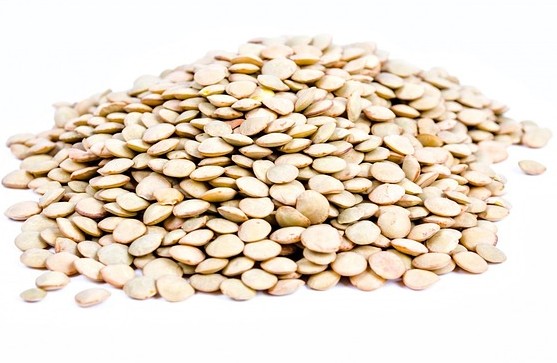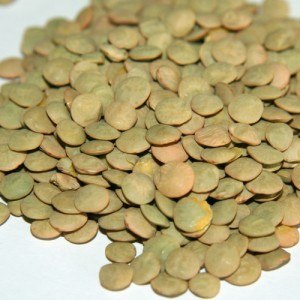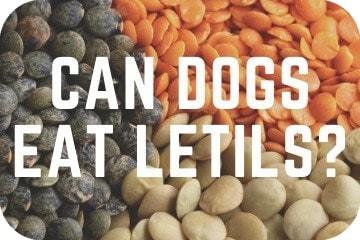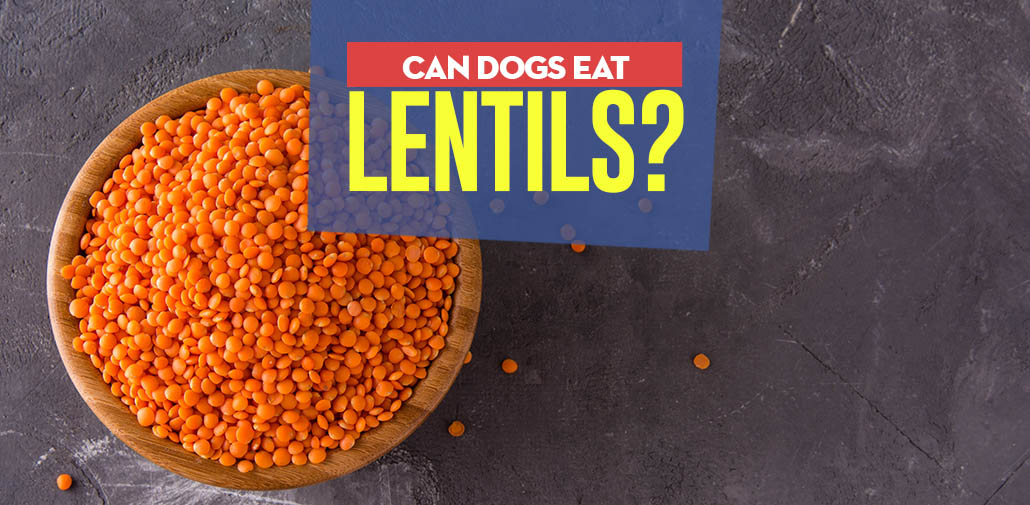Legumes are an essential feature of salads; their popularity is tough to be rivaled by other candidates. The reason why legumes such as lentils are a popular choice is that they are both tasty as well as nutritious. So many proteins and vitamins that you might be missing are supplemented through lentil salads. But this discussion isn’t about you. No, what we are interested in talking about is can your dog eat lentils? Why are we going to talk about it? It is a matter of common observation that humans love to share food with their canine friends. Sometimes, it is adorable. The rest of the time, it turns out to be an act that has dire consequences. With this background story in our mind, we have decided to embark on the quest for lentils and see if these legumes are safe for your dog or not!
A bit about lentils
But before we answer this question in detail, we figured that a few details about lentils wouldn’t hurt the cause of better understanding. As we know, lentils are members of the legume family of plants, and they come in a variety of shades. Lentils can be green, red, brown, or even black, so you will have difficulty recognizing these tiny beans just by color. Because lentils are one of the cheapest sources of available proteins, these are quite popular among bodybuilders and weightlifters. Ah, but this discussion is about your canine friends! So, let us answer the question that we asked in the very beginning.
Can dogs eat lentils?
Yes, your dog can eat lentils. No major issues have been reported when it comes to canine lentil consumption. However, we are afraid that you will have to stick with us for a little longer. If you skip the rest of this article, you will miss out on all the important considerations that must be in your mind when you feed lentils to your dog. Let us catch your attention by telling you that your dog can get more than 200 calories! Not only that but lentils are also enriched with some of the most important dietary elements. These include iron, magnesium, potassium, and manganese, apart from certain key vitamins like vitamin B. So yes, from a nutritional point of view, lentils are good for your dog. But there are certain things that you must keep in your mind and which we are about to discuss: canine lentil feeding.
The canine digestive system and lentils

Through various studies, it has been proven that lentils are safe and adaptable to your dog’s digestive system. However, digestibility is an important factor that must be taken into consideration. It is the rate at which your metabolic system processes something. And unfortunately, the digestibility of lentils is not as high as one would have hoped for. The takeaway from this complex narration of canine metabolic processes? It would help if you didn’t feed your dog too many lentils. Otherwise, certain gastrointestinal complications might get the better of your dog. These GI complications include diarrhea and constipation. How much of these legumes are ok? Well, we would say start from smallish quantities and see how your dog responds to the beans. You can increase the amount later, but it shouldn’t be more than a cupful.
Should you cook lentils?
Absolutely, yes. There is no point in feeding raw legumes to your dog. Why must you ask? Well, raw legumes are enriched with glycoproteins that are not good for your dog’s health. When consumed in the uncooked form, these glycoproteins lead to toxicity after absorption in the intestines of your furry pet. But cooking the lentils gets rid of these glycoproteins. Well, not all of them, but to an extent where it is safe for your dog to have a few of these. How you cook lentils also matters a lot. A slow cook, for example, will not yield the desired results. Steaming or boiling at a decent flame, on the other hand, will result in the maximal degradation of such harmful toxins. So, we say, you must cook lentils and cook them well for the sake of your canine friend’s health.
Lentils as a source of energy?

We mentioned this earlier as well but let us build a little more in this section. Lentils are enriched with iron, which is great if your dog is one that loves to walk 24/7. The role of iron in transporting oxygen in the blood is a crucial one. We will not bore you with the extensive details, but we can assure you that if you want your dog’s cardiovascular health to be in good shape, you will have to think about a diet that has plenty of iron in it. Lentils are just the thing you need! Then, we mentioned that lentils have a lot of vitamins as well. Thus, using lentils as a substitute supplement might not be a bad idea either.
Serving lentils
Lentils have boiled well; now, it is time to serve them! But wait a minute. You didn’t add turmeric powder to lentils by any chance, did you? If you did, you have our respect. If you didn’t, you could add it the next time you cook lentils for your puppy since they love it that way more. Apart from adding a unique flavor, there are other benefits associated with turmeric as well. It is a great antidote to inflammation as well as rheumatoid arthritis. There are some other ways of serving lentils to your dog as well. For example, you can serve lentils to your dog by mixing up these legumes with chunks of meat or vegetables. Throw in some rice, and your dog is going to lick the bowl mad! Whenever you introduce something new to your canine friend’s diet, you must be innovative and creative.
Why are lentils good for your dog?

We have talked about the fact that lentils are an extremely efficient source of energy for your dog. Let us bring into the limelight some other key benefits of canine lentil consumption.
It is a sad reality, but dogs can develop the condition and symptoms of diabetes as well. The reasons are numerous, but we won’t give too much time to the problem. Rather, we want to talk about the solution. Well, not exactly a solution, but something which will keep your dog’s sugar levels in check for some time! Lentils have a great nutrient profile, but we haven’t told you yet: their sugar content is lower than most legumes and vegetables. So, you can see why lentils will make a great meal for your diabetic friend? The cholesterol content is quite minimal, as well. And it has been proven through various studies that lentils are great for boosting the immune system. All of these reasons snowball into each other to make lentils a great choice for your canine friend!
Are there any side effects?
So many good things about lentils; why shouldn’t you feed your dog these legumes regularly? Well, for several reasons. Firstly, legumes are historically famous for flatulence. And we are sure that you don’t want your puppy farting too often! While it is true that lentils won’t cause as much gas as some of the other beans, we still don’t want you to be feeding too many of these to your dog. It is just not limited to gas; there is a risk of other gastrointestinal complications as well—for example, diarrhea and constipation. Also, don’t fall for the lentils that are available in commercial packaging. These have many preservatives added, and we are sure you don’t want your puppy to be a victim of salt poisoning. Ohm, and please don’t feed commercially cooked lentil soups to your dog!
The final verdict
Well, it is time to summarize stuff. Hmmm, let us see. Lentils are OK but only when you are feeding these in a moderate amount to your dog. Please don’t forget the bit about cooked lentils. No point poisoning your dog with something you consider a treat, but it is far from that. Also, just because the benefits outweigh side effects, you cannot start dishing out lentils for every meal. Try mixing up things and see which combination your dog likes the most!
Conclusion
Well, we have to wrap up this discussion now. There isn’t enough space and time left in our credit, but we hope you learned many new things about the canine diet. Lentils are not a common feature of dog cuisine, and we wonder if you had even heard of them being used for this purpose before you started reading this article! But like we said earlier, forcing an issue is never a good thing to do. In case you feel things are not going as well as you had planned, you should drag that bowl away from your dog immediately! If things go south, immediately get the vet!
